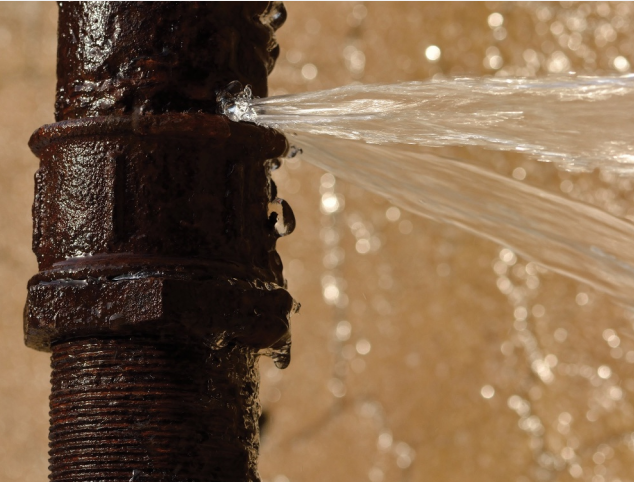 Like people, no two condos are the same. Establishing methods of managing all types of condos by the same rules and standards is fruitless. A 40-year-old high-rise condo on the beach in York County needs a different maintenance plan than a community of new wood-framed duplexes in Franklin County. Following the collapse of the Champion Towers in Surfside, Florida, state legislators and condo industry leaders across the country have been scrutinizing past best practices of condo capital repairs with mixed results. As an example, earlier this year Florida signed into law the “Florida Condo Safety Act.”
Like people, no two condos are the same. Establishing methods of managing all types of condos by the same rules and standards is fruitless. A 40-year-old high-rise condo on the beach in York County needs a different maintenance plan than a community of new wood-framed duplexes in Franklin County. Following the collapse of the Champion Towers in Surfside, Florida, state legislators and condo industry leaders across the country have been scrutinizing past best practices of condo capital repairs with mixed results. As an example, earlier this year Florida signed into law the “Florida Condo Safety Act.”
This well-intentioned Florida legislation will require structural inspections by licensed engineers of all 25-plus-year-old condo buildings of at least three stories and within three miles of the coast as well as 30-plus-year-old buildings everywhere else. The law also will require all condos to have enough money in their reserves by 2025 to maintain these buildings’ structural integrity. At first thought one might think, “what’s wrong with that?” The problem is 2 million Floridians live in these 30-plus-year-old buildings, and Florida has 1.5 million condo units and 28,000 community associations. Where will these condo boards find the engineers or architects needed to fulfill the law’s goals? Needless to say, changes will need to be made in the next Florida legislative session.
Finding & Diagnosing Flaws
So how can Missouri condos avoid Florida’s dilemma? Missouri’s condo inventory is beginning to age. Older buildings can hide their structural flaws, which only can be revealed by looking for them. Whether it is water infiltration, spalling concrete, crumbling brick, or cracking wood, it is only a matter of time for some of Missouri’s aging condos to need similar inspections and repair. The villain in most façade or structural frame failure mysteries is typically water. It causes corrosion, erosion, internal leaking, paint peeling, rot, settlement, and a host of other building woes. If your building has concrete elements suffering from spalling or cracking it might be due to the reinforcing steel in the concrete becoming heavily corroded due to water penetrating the surface. Ordinary rust scale expands with incredible force per square inch when confined, think bulldozer power.
Many absorptive façade materials (concrete, sandstone, mortar, fired-clay masonry) can be seriously damaged by cyclical freezing and thawing of water entering the material through natural porosity or surface hairline cracks. These pockets of moisture can become trapped in façade walls whose freezing can expand causing further cracking, spalling, or displacing adjacent masonry by a phenomenon called ice lensing.
This spalling can create dramatic loss of structural integrity to parapet walls, retaining walls, and cantilevering decks, not to mention the safety hazards from falling façade components. Complicating the diagnosis problems and the repair solutions is that spalling concrete can be caused by other forces other than water. Similar concrete failures can manifest themselves by compression, tension, or vibration overloading.
Materials Matter
Equally important in a façade or frame investigation is understanding what materials make up these structural elements, as looks can be deceiving. Most of the old brick buildings in major cities use the exterior brick to support the interior floor framing and are thus called “bearing wall masonry.” These heavy walls were designed to prevent moisture from entering into the building’s interior spaces by the brick absorbing water in its multi-layers of brick and drying out when the weather improved. Over a hundred years ago, steel framing was introduced, allowing the building designer to hang the exterior façade skin on the perimeter of the frame to produce more lightweight and cost-effective buildings. Today’s brick building uses brick as a veneer in which the brick is only the first line of defense against water infiltration. The brick actually shields the true water barrier sheathing behind a cavity space. This cavity acts as a drainage channel with weep holes at the bottom of the brickwork.
Similarly, many older buildings are covered with a stucco façade surface, which is a cement parge coating over a steel lattice similar to plaster placed onto wood lathe strips. Modern buildings use an exterior insulation finishing system (EIFS) seen on many condominium and retail building exteriors. An EIFS façade depends on interior drainage surfaces and is totally different in repair methods than stucco.
Investigative Techniques
In addition to judging the cause of the façade problem, it is important to determine its seriousness and whether immediate repair steps are necessary or whether it is not an “active” problem that can be set aside to allow other more pressing issues requiring capital outlays from the reserve fund.
To address these questions, there are a variety of invasive and non-invasive techniques to investigate the problem. If the concern is corroding imbedded steel, there are firms providing chloride ion content testing of concrete or mortar to gather quantitative evidence of corrosion potential. Simple stain gages can be placed over cracks to detect active movement. Infrared thermography can discover unseen façade connection failures, delaminations, or thermal “short circuits” due to wet insulation. There are a variety of water moisture content meters available at building supply stores and woodworker hobby shops that can accurately detect and measure moisture in a variety of materials including wood, drywall, and concrete.
So the good news is there is plenty an observant building committee or property manager can do to prevent small structural problems from growing into something major.

 Ice forming inside of pipes often is not the cause for pipes breaking. Rather, water pipes
Ice forming inside of pipes often is not the cause for pipes breaking. Rather, water pipes  Typically when I am discussing water problems with the condo’s property manager or the board, the focus is on leaking roofs, foundations, windows, or other building envelope points of water infiltration. Instead, this article’s focus will be on water damage problems from inside sources and their prevention.
Typically when I am discussing water problems with the condo’s property manager or the board, the focus is on leaking roofs, foundations, windows, or other building envelope points of water infiltration. Instead, this article’s focus will be on water damage problems from inside sources and their prevention.